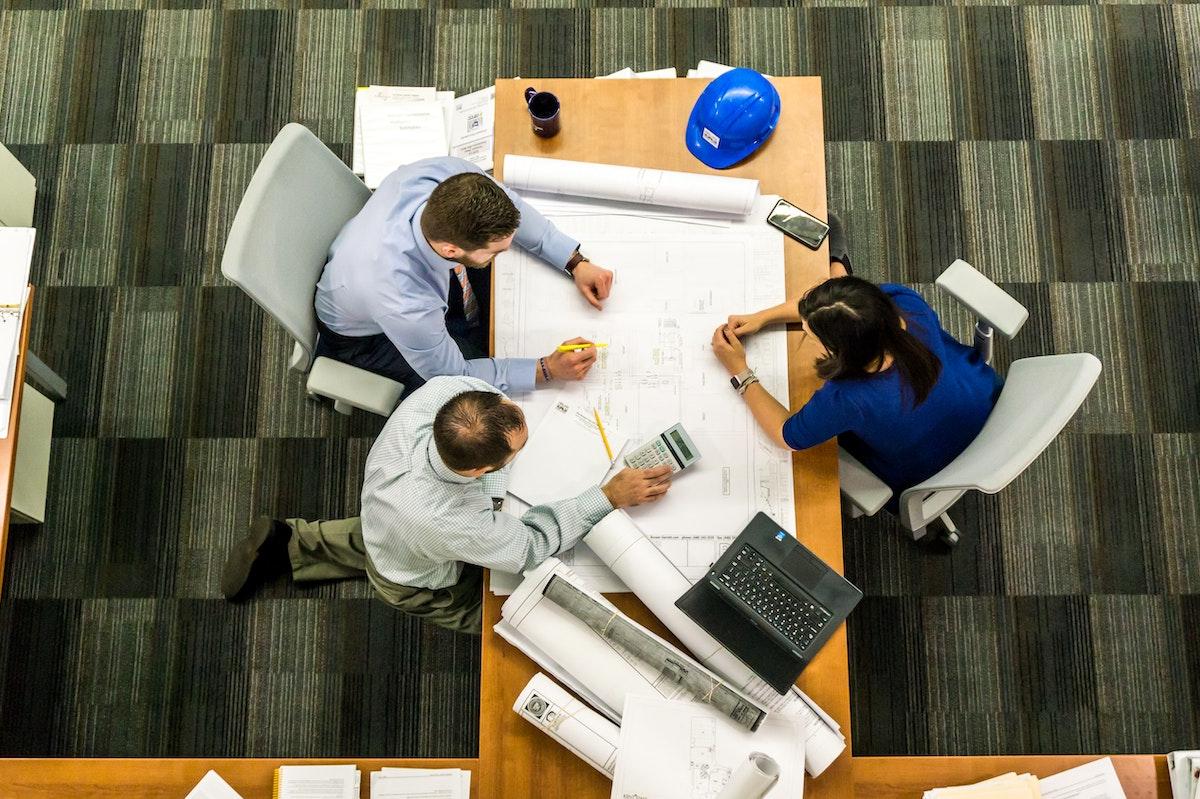Emerging from COP27: A New Standard for Protecting Indigenous Lands


Last week during the COP27 climate talks, three major sustainability organizations partnered together to release the Land Rights Standard, a new set of best practices and principles for respecting the land and resource rights of Indigenous peoples, Afro-descendent peoples and other local communities. The Rights and Resources Initiative, the Global Landscapes Forum and the Indigenous Peoples Major Group for Sustainable Development launched the new standard at a sideline event during the U.N. climate conference in Egypt.
The new Land Rights Standard targets investors, companies, civil society organizations and institutions involved in landscape projects, encouraging them to better respect the rights of — and create partnerships with — local communities and groups, particularly those who have been historically marginalized.
Centering territorial and resource rights for Indigenous communities
The standard seeks to respect the territorial and resource rights of Indigenous and Afro-descendant peoples and other local communities — with the goal to promote the legal recognition of those rights, and require full collaboration in all programs, projects and initiatives.
Pasang Dolma Sherpa, executive director of the Center for Indigenous Peoples' Research and Development (CIPRED), emphasized the need for non-state actors to collaborate with Indigenous communities at the COP27 sideline event about the new standards.
“Indigenous peoples, local communities, and Afro-descendent communities are crucial in the discourse of climate change, natural resource governance, and anything in relation to the land," Sherpa said. "Often, Indigenous issues and concerns are seen as a threat by state parties. It is important to have dialogue on how the role of Indigenous people and local communities could contribute to the sustainability of natural resource governance.”
To that end, the Land Rights Standard promotes conservation by local communities and encourages a rights-based approach to conservation projects, Sherpa explained. “The new standard is designed to help non-state actors, conservation organizations, and the private sector recognize the rights of the Indigenous people and local communities, and it encourages outside agencies to participate with local communities and gain consent for environmental projects,” she elaborated.
This new standard also seeks to include women’s voices. Cécile Ndjebet, president of the African Women’s Network for Community Management of Forests (REFACOF), said, “We can leverage the Land Rights Standard to promote responsible investment, but promoting women's equal inclusion and participation in governance and ensuring zero tolerance for violence and harassment is very, very important to this.”
Supporters of these new guidelines say they can assist companies and other non-state actors on how to mitigate obstacles for women, Ndjebet added. “We encourage actors to forge powerful alliances with women's organizations across all regions to ensure that their investments won’t leave the women who are on the frontier of climate mitigation and conservation behind,” she said.
Does sustainability need another standard?
When the Land Rights Standard was launched at COP27, it was immediately endorsed by other standard-setting organizations.
Dr. Solange Bandiaky-Badji, president of the Rights and Resources Initiative, acknowledged that there is a growing body of sustainability standards and principles. She told the COP27 audience: “Why is the Land Rights Standard necessary in the landscape of all the other [standards]? The other efforts have been uncoordinated and lack globally-recognized principles that are grounded in human rights law and informed from Indigenous peoples, local communities and Afro-descendent people. The Land Rights Standards are simple principles that reflect best practices in landscape-level actions and investments supported by institutions, companies, investors and activists.”
The Forest Stewardship Council (FSC) is one group that certifies sustainably managed forests. Kim Carstensen, the director general of the FSC, said the organization is committed to integrating principles from the Land Rights Standard into the next generation of FSC standards.
“We have been a standard carrying and developing organization for over 25 years. This new Land Rights Standard will be a new milestone around which we can further develop our standards," Carstensen said. "In our next revision, we will look at the new standards and ask what we can use as a guiding tool. We will integrate it into our thinking about the next generation of our standards, and we can all work together to make it something that is seen by and understood by the people who need to use it in the future.”
What’s next?
The founding partners are asking conservation organizations, companies and investors to consider endorsing the Land Rights Standard. Bandiaky-Badji noted: “These standards are not legally binding. They are voluntary. We hope [non-state actors] will promote it within their institutions and rights holders will contribute to promoting awareness of these standards.”
The Rights and Resources Initiative, works to advance the forestland and resource rights of Indigenous peoples, Afro-descendant peoples and local communities, is also working to include the principles of the Land Rights Standard as a standing agenda item at climate-related events, Bandiaky-Badji said.
Image credit: Azzedine Rouichi via Unsplash
Can Seagrasses Fight Global Warming and Spur Sustainable Development?


As the COP27 climate talks in Egypt wrap up, we have learned more about a frequently overlooked ecosystem in the fight against climate change: seagrasses. While they’re often overshadowed by neighboring coral reefs and mangroves, seagrasses are one of the most valuable coastal ecosystems in the world. They absorb carbon up to 35 times faster than tropical rainforests, soaking up to 10 percent of the ocean’s carbon each year.
Seagrasses belong to the larger set of blue carbon ecosystems. This colorful name refers to carbon captured from the atmosphere by marine and coastal ecosystems. And the tidal marshes, mangroves and seagrasses lining our coasts are a powerhouse for storing carbon. For instance, the protection of blue carbon ecosystems could prevent the equivalent of 670 billion pounds of carbon dioxide (304 billion kilograms) from being released each year.
Blue carbon ecosystems are champions in fighting climate change. Their protection could provide one of the largest climate benefits on a per-acre basis compared to other land-use projects. Restoring these valuable environments could soak up the equivalent of 841 billion kilograms of carbon per year, or around 3 percent of annual global emissions. This climate change mitigation translates into $1,317 per hectare annually for seagrass meadows.
The environmental and economic benefits of seagrasses
Besides their ability to fight global warming, seagrasses also provide numerous other benefits. Called the lungs of the sea, they release oxygen into the water, while also stabilizing sediments, cycling nutrients and reducing coastal erosion. A range of commercially and recreationally fished species such as cod, snapper, pink shrimp, conch, spotted seatrout and pollock are found in seagrass beds during part of their lifecycle. In fact, these areas support commercial fisheries worth over $4,800 per hectare per year. Finally, charismatic species like sea turtles, manatees, dolphins, stingrays and wading birds feed in seagrass beds.
What’s threatening seagrass?
Unfortunately, seagrasses are declining rapidly, and about 30 percent of their global presence has been lost since the late 1800s. Densely populated areas often surround seagrasses, which stresses them. Regions most at risk for seagrass loss include Europe, Japan, the western North Atlantic, the northeast Pacific and several locations in Southeast Asia.
A long list of threats is driving seagrass decline including coastal development, dredging, disease and invasive species. In addition, poor water quality, which limits the light available for photosynthesis, is a major threat. Destructive fishing practices such as anchor damage and trawling can also harm seagrass beds. Finally, climate change — including warming waters and ocean acidification — is taking a toll on seagrass meadows.
What’s the solution for saving seagrass?
The COP27 talks illustrated pioneering work in preserving seagrass. For example, in Madagascar, Blue Ventures supports local fisheries to protect blue carbon ecosystems. The social enterprise helped to establish locally-managed marine areas, where local anglers conduct seagrass mapping and monitor ecological conditions. These community conservation initiatives benefit communities by providing substantial increases in fisheries' yields and income.
Another example comes from Turkey. Along its coastline, the Mediterranean Conservation Society and Flora and Fauna International have developed no-fishing zones, along with a system of community rangers to patrol these areas. These zones protect seagrass meadows from damage and help fish populations recover, while also supporting local communities and anglers by boosting fish yields.
Blue carbon markets
One way to protect this unique ecosystem is through carbon credits. However, blue carbon credit programs are new, while the ones for seagrasses are in their infancy. The first seagrass project to apply for carbon credit certification did so in 2021. Yet while the market for blue carbon is small, it’s growing exponentially. The overall carbon credit market is estimated to be worth $50 billion by 2030, and project planners hope to claim a slice of that for blue carbon.
While it may be too soon for seagrass carbon credits, some businesses are already offsetting their emissions through other blue carbon credit investments. These credits need to be quantified accurately, independently verified and monitored. Additionally, these programs should be permanent, ensure that the mitigation activity wouldn't have taken place without the carbon credits, and involve locally compensated communities.
Carbon credits are a great investment, but they should be viewed as part of a larger strategy to fight against climate change. Businesses should work to reduce and avoid emissions along with mitigation. Along with carbon credits, embracing more environmentally friendly and sustainable practices will go a long way in protecting our valuable tidal and marine ecosystems — and generate sustainable development opportunities as well.
Image credit: Benjamin L. Jones via Unsplash
Building Organizational Credibility Through Sustainability


Organizations have faced numerous challenges over the past two years and will likely continue to operate in an environment fraught with risk as they navigate the ramifications of an ongoing global pandemic, climate change and unprecedented supply chain disruption.
Balancing both immediate stability and future growth can present different challenges spanning an organization’s capacity, people, and processes. However, if leaders reframe their approaches and take a closer look at their core business models during this time of evolution, they could unlock opportunities to mitigate future disruptions through a new model rooted in the application of sustainability.
The bigger the challenge, the bigger the opportunity
Facing extreme temperatures, drought, flooding and other climate impacts, organizations have a growing challenge ahead of them that has resulted in — and will continue to create — disruptions and increased costs related to their sites, property and supply chains.
Across the world, climate change is having a significant impact on the overall risk to workers, particularly those who work outdoors. Many business leaders have noted specifically how recent extreme weather events have slowed operations and taken a heavy toll on employees. Another significant effect of increasingly climate unpredictability and volatility is directly or indirectly harming an organization’s infrastructure. Too many businesses are still in the early stages of establishing formalized practices relating to continuity management and climate risk-related events, worsening widespread disruption.
Sustainability represents a massive transformational opportunity for the organizations who put innovation and new business models at the heart of their approach; however, awareness and action are two very different things.
Unlock opportunity through climate risk adaptation
To better understand exposure to climate-related risks, organizations can leverage climate forecasting data to identify and evaluate future climate impacts based on the locations and unique characteristics of their operations and supplier sites. With this, an organization can begin to prioritize points throughout their value chain based on how they are exposed, the timing and speed of climate risks, and the level of criticality of the sites.
Equipped with an improved understanding of climate exposure, leaders can then engage sites to understand their awareness and adaptive practices, which provides a more comprehensive understanding of vulnerability. With this more holistic view, leaders can then begin to adjust or build capacity and practices needed to properly understand and manage the specific risks across all sites and supplier sites.
By taking these first steps, organizations can begin developing a sustainable strategy to reduce climate risk exposure and limit the burden on organizational resources and suppliers. This should also be done in parallel with carbon reduction plans, which account for some of the transitional risks as the world shifts to a low-carbon economy.
Building credibility through sustainability
The potential pitfalls of ignoring climate risk are not limited just to infrastructural issues. Investors, customers and insurers increasingly view climate disruption as a material risk that requires a structured, scalable framework of practices to mitigate disruptions.
Institutional investors in particular have begun factoring climate risks into their rating processes following BlackRock CEO Larry Fink’s bold 2020 letter proclaiming climate change as an essential differentiating factor for future investment considerations. In addition, governments and leading organizations around the world are rapidly adjusting laws and reporting requirements around key climate factors such as carbon emissions and supplies of rare minerals, like those used in the much-discussed semiconductor supply chain.
One example lies in the new rules recently proposed by the U.S. Securities and Exchange Commission (SEC) related to public companies’ disclosure of climate-related risks. Businesses are likely to see increased investor and customer scrutiny resulting from these guidelines, which would require them to “include information about climate-related risks that are reasonably likely to have a material impact on their business, results of operations or financial condition, and certain climate-related financial statement metrics” in a note to their audited financial statements. As governments continue to impose additional reporting and disclosure requirements, it becomes even more urgent for businesses to get a handle on how climate change factors into their operations.
But rather than view these new considerations and evaluations as a nuisance or a threat, businesses must see them as a unique chance to build global credibility beyond their core business functions. Companies that can offer examples of sustainability success will soon be positioned for considerable growth and investment beyond their peers. While properly adhering to these new expectations may require a short-term investment in legal experts and climate specialists, for example, the long-term gains should prove to be worth the initial expenditure.
Sustainability represents a huge transformational opportunity for organizations. Those who put innovation and new business models at the heart of their approach today will be well placed to unlock the future benefits of this opportunity and drive change across their organizations.
Image credit: Pexels
Yes, Black CEOs Now Command a Big Paycheck. Yes, There’s Still a Problem.


Don’t assume diversity in the workplace has been solved because Black CEOs make more than white execs.
A curious trend has occurred in the world of executive pay in the U.S. It turns out that Black CEOs on average are paid more than their white peers. Incidentally, when companies appoint them as CEOs, their market caps enjoy a jump in value, according to a recent study.
But that doesn’t mean we’re seeing progress when it comes to ensuring we have executive leadership that reflects not only what America looks like today, but also the depth of talent we still leave untapped in this country. (Not to mention the pay gap between CEOs and what the average U.S. corporate employee makes, but that's another issue.)
To learn why this seemingly good news really isn’t all that, 3p recently caught up with Marvin Owens, chief engagement officer at Impact Shares and a former NAACP senior director. He discussed why the dearth of Black CEOs still must be addressed, shared his perspective on the challenges that Black professionals often face, and offered suggestions on how to increase the pipeline of talent for Black professionals.
Editor's note: Be sure to subscribe to our Brands Taking Stands newsletter, which comes out every Wednesday.
On the surface, the high rate of pay for the six Black CEOs who currently head Fortune 500 companies makes it sounds as if the business community is buying into fairness and equity when it comes to hiring
But Owens says the reality is more of a mixed bag. “What this phenomenon shows is that Black CEOs can demand higher pay due to the smaller pool of candidates,” he told us. “While higher salaries are a good thing, it also indicates that firms are choosing from smaller pools, which impacts the market. It also indicates that these firms have done a poor job of developing and maintaining internal talent.”
Further, what appears to be a bonus for leading Black executives is actually reflective of what’s been going on with diversity, equity and inclusion (DEI) across corporate America. “Most Black professionals I’ve engaged most recently point to a marked difference in how their firms are communicating a commitment to racial equity, but with little change in policies, or internal resource commitments, to develop a diverse talent pool and ensure accountabilities and remedies for inequity,” Owens explained.
One of the largest barriers to opening up more opportunities for talented employees of all backgrounds is that many organizations are still resisting calls to disclose their hiring data based on race and ethnicity.
But as is the case with any company’s decision-making processes, you can’t map out the best strategy without solid, informative data. As a result, many companies are actually missing out on hiring the best possible current and future leaders. “Solving problems like this always begins with gathering the data,” Owens told 3p, “and as we’ve seen with the general corporate resistance to racial equity audits, the ability to get to a solution is hampered by an unwillingness to gather and disclose the data. Data gathering and disclosure is viewed through the lens of risk, and not opportunity.”
As the saying goes, hiring a talented workforce and the best possible leadership is a journey. Concern over today’s lack of diversity within the workforce shouldn’t get in the way of ensuring that a company’s C-Suite of tomorrow includes people who are stellar at what they do, but who often find themselves overlooked in today’s corporate world.
The hard work begins now — or, in reality, it should have started many yesterday’s ago. Organizations that say they’re focused on just, fair and inclusive hiring can start by looking within, Owens advises. “Companies committed to closing the racial pay gap should begin with their own employees, and assessing whether inequities exist (intended or unintended),” he said.
Business leaders who believe their current methods of hiring can remain under the radar are mistaken. More stakeholders are noticing, particularly the ones who buy the equities — as well as those who write the rules. “Investors and regulators have already underscored the importance of human capital," Owens explained. "A firm enacting internal policies that not only support pay equity, but provide for accountability and remedies when inequity exists sends a message to the broader market, and ultimately impacts public policy.”
And it works both ways, as policymakers will notice that if something works well in a business setting, it can work in other spheres as well. “Corporate behavior has enormous influence on public policy,” Owens said.
While many companies have gone silent two years after they made a copious amount of promises after George Floyd’s murder, it is still not too late to follow through. Owens suggests a three-pronged approach, starting with: “Assess the current state of your firm relative to this issue. Racial equity audits that focus on human capital can be an extremely helpful tool to establish a starting point based on data.”
Then, it’s important to listen to employees — and perhaps branch out to prospective employees, too. “Engage current Black professionals and get their sense of the problem, the culture and their experiences," Owens advised.
Finally, understand there are no quick solutions — in fact, it’s best to develop a plan that will work for a long time instead of seeking quick answers. “Invest in the development of a diverse talent pool, not with expectation of short-term returns, but long term,” Owens concluded.
Image credit: Taylor Grote via Unsplash
Plastics and Their Role Within a Global Clean Energy Transition


At the conclusion of the Accelerating the Clean Energy Transition by Ending Plastic Pollution discussion last week at COP27, the moderator, Aarthi Ananthanarayanan, who is the director of the Climate and Plastics Initiative at the Ocean Conservancy, closed with a startling statistic: More than half of the plastics ever made were manufactured in the 21st century.
Startling, but unsurprising. There are the plastics in daily use that are easy to see — our keyboards, our phone cases, our water bottles and our food containers. Then there are the more insidious plastics we are mostly unaware of, such as the microplastics in our clothing, cosmetics and personal care items.
This increase in the pervasiveness of plastics coincides with the growth of greenhouse gases in the environment. As Ananthanarayanan explained, plastic production accounts for 6 to 8 percent of carbon emissions, equivalent to the emissions of the aviation industry. And this percentage is projected to increase as petrochemical companies transition their products from energy into plastics. By 2050, an estimated 20 percent of global oil demand will be in the plastic sector. Madeline Rose, climate campaign director for the nonprofit Pacific Environment, identifies this shift as “a lifeline industry for oil and gas,” as fossil fuels are phased out of other markets.
A global plastics treaty
From Nov. 28 to Dec. 2, the United Nations will bring together 196 countries in Uruguay to agree upon a global plastics treaty. The goal of the treaty will be “to promote sustainable production and consumption of plastics from product design to environmentally sound waste management through resource efficiency and circular economy approaches,” according to the U.N.
Cristina Rodríguez, director of climate change adaptation and desertification with the Ministry of the Environment of Peru, hopes for an “ambitious and realistic treaty” for the reduction of plastic at the meeting in Uruguay. The discussions will include, among other areas, “the development of national action plans … to work on the prevention, reduction, and elimination of plastic production," as well as "a broad dialogue of priorities, needs, challenges, and barriers" with a focus on "technical assistance and financial support,” she said.
San Francisco-based Pacific Environment, which advocates for conservation and restoration along the Pacific Rim, is advocating to “completely phase out single-use plastics, curb durable plastic production and pursue an end state of zero-waste,” Rose said. At COP27, she put forward a four-pronged approach that includes reducing production and demand for single-use plastics, increasing durability in medical plastics, shifting to a reuse and refill model for shopping and packaging, and adopting smarter recycling and end-of-life approaches.
The role of intersectionality in decarbonization
Earlier this year, Peru formed an initiative with Chile, Colombia, Costa Rica, Dominican Republic and Uruguay to incorporate a circular economy into their indices. This initiative asked for technical assistance from the U.N. Climate Technology Center and Network to prepare guidelines for monitoring and evaluating the impact of circular economy measures on achieving their national climate climate targets, Rodriguez explained at COP27.
Additionally, a cessation of plastic incineration would have an immediate impact as this process increases the lifecycle of greenhouse gases by 30 percent, Rose added.
Fossil fuel subsidies are also a contributing factor to plastic production rates, as 60 to 70 percent of plastic production costs can be attributed to fossil fuels, Ananthanarayanan said. Without these subsidies, the plastic circular economy becomes a more financially desirable option — and in fact she claims that a plastic circular economy is one of the least expensive decarbonization options to fund.
Grassroots efforts
Sharon Levine, founder of Rise St. James, a grassroots organization that prevented the construction of a new plastics plant in St. James Parish in Louisiana, has firsthand knowledge of the benefits of plastic reduction. The plant, which would have been used to produce single-use plastics, would also have been one of the largest producers of greenhouse gas emissions in the U.S.
This plant would have become the 14th plastic manufacturer in the parish, where the rate of death by cancer is 50 percent higher than the national average, Levine said.
A move toward an elimination of single-use plastic combined with a circular plastic economy will have a significant impact on greenhouse gas emissions and plastic production and pollution. As Levine reminded attendees at COP27, “We can go back to the way it was when I was younger and we lived without plastics.” It was not that long ago that we did not have such a reliance on plastic, and we can return to that time as a blueprint to move forward.
Image credit: Pexels
When Boycotts Work: Advertisers Flee Twitter


Chaos quickly ensued after the well-known entrepreneur Elon Musk purchased Twitter last month. Current advertisers paused their spending, and they are unlikely to revive it any time soon. In effect, brands have launched a powerful boycott that can only end in one of two ways: either Musk changes his behavior, or Twitter goes down.
Twitter, boycotts and behavior change
Driving a media platform into the ground is not the typical goal of advertiser boycotts. However, the Twitter situation is anything but typical. Even after the swift, steep loss of advertiser revenue, Musk continued to lay off skilled employees — including those in the all-important content moderation and integrity offices.
Musk also summarily halted Twitter’s “blue check” identity verification policy, opening the door to a flood of imposter accounts that could wreak havoc with brand reputation. In one notable example, Eli Lilly suffered a steep drop in its stock price after an imposter account announced that the company was giving away free insulin.
Editor's note: Be sure to subscribe to our Brands Taking Stands newsletter, which comes out every Wednesday.
The purchase of Twitter officially closed on Oct. 27. CNN summed up the damage 11 days later, on Nov. 7. As CNN reported, at the time of purchase ad sales accounted for 90 percent of Twitter’s overall revenue. In less than two weeks, a growing number of advertisers jumped ship, starting with General Motors. Volkswagen Group followed suit shortly after. That may be expected since both companies compete directly with Musk’s electric vehicle venture. However, others also soon headed for the exits, including General Mills, Pfizer, Mondelēz International and REI.
In a more ominous sign for Twitter, the leading ad buying firm Interpublic Group issued a pause recommendation to its clients, including Unilever and Coca-Cola.
To stem the damage, some brands are also shutting down their Twitter accounts. Balenciaga and Playbill are reported to be among that group, with Playbill citing the platform’s “tolerance for hate, negativity and misinformation” as its reason for quitting.
The limits of tolerance
The reasons for the exodus are obvious. Musk has made it clear that his approach to social media is of a piece with the tolerance for “different” thinking espoused by Facebook co-founder Mark Zuckerberg when he supported the controversial Facebook board member Peter Thiel, who played an instrumental role in former U.S. President Donald Trump’s 2016 campaign for office. (Thiel did not stand for re-election to the Facebook board in 2022.)
Though tolerance for diverse opinions may look good on paper, in Zuckerberg’s case critics say it is nothing more than a fancy justification for throwing accepted standards of civil, moral and ethical behavior out the window.
Musk stretched that point to the limit as the new owner of Twitter when he announced plans to loosen the platform’s content moderation policies. The predictable result ensued. Just five days after the sale of Twitter closed, CBS and other media outlets took note of “a massive spike in hate speech” on the platform described by a Montclair University study.
When good brands go bad
If Musk assumed that his high-profile public persona would insulate Twitter from an advertiser boycott, he was mistaken.
It is true that Musk has gained legions of adoring fans over the years, due to his reputation as a pioneer in the fields of electric vehicles, solar power and rocket ships.
However, Musk’s planet-saving brand has suffered a great deal of damage in recent years, thanks in part to his misdirection on COVID-19, allegations of racism and sexual harassment at his companies, and the environmental impacts of his SpaceX venture.
As a frequent and regular user of Twitter, Musk’s behavior on the platform itself has also impacted his reputation. That includes a tweet last month in which he recommended that Ukraine capitulate to Russia, and another in which he advised that China could turn Taiwan into another Hong Kong.
That behavior carried through to the 2022 U.S. midterm elections. Musk politicized the entire platform by tweeting out support for Republican candidates on Nov. 7, making him the first head of a social media company to take an explicitly partisan position.
What is the point?
So far, much of the media attention on the chaos at Twitter has focused on advertiser brand reputation.
Some have also pointed out that disaster response and other key civic services are at risk for impersonation and misdirection. That includes the electoral system.
Trump normalized lies about election fraud in the run-up to his successful bid for the presidency in 2016. The cacophony of conspiracy theories reached a fever pitch after he lost his office in 2020, and it has continued ever since.
The last thing the democratic process needs is more misdirection. Nevertheless, the New York Times and other media reported that false information about the 2022 midterm elections “proliferated” on Twitter in the days after the sale closed, coinciding with the relaxation of content policies on the platform.
That may be reprehensible, but it is consistent with Musk’s support for authoritarian Russia and China over the democracies of Ukraine and Taiwan. Sowing confusion and chaos is the hallmark of effective propaganda. Whether intentional or not, Musk — and his brand — are now part of it.
Next steps for boycotts
In addition to risks to corporate and public-sector communications, the new regime at Twitter also spells trouble for grassroots organizers.
Somewhat ironically, that includes Twitter campaigns like Grab Your Wallet and Sleeping Giants. Both campaigns launched in response to the Trump presidency, with the aim of pulling the financial rug out from under the Trump brand and the conservative media that supports him.
On their own, consumer boycotts are notoriously fickle and difficult to sustain. These two campaigns' Twitter-based efforts were successful because they enabled consumers to pool their voices on social media and alert businesses to brand reputation risks.
Now that Musk has enabled imposter accounts to flood Twitter, grassroots organizing on the platform could become more difficult, if not impossible.
But perhaps that was the point, all along.
Image credit via Pexels
At COP27, a Clarion Call to Scale Up Regenerative Agriculture — Fast


Agriculture, food and land-use is the largest source of greenhouse gas emissions in the world, responsible for between 25 and 33 percent of global emissions. Increasingly, agribusinesses and investors are looking to regenerative agricultural practices to mitigate the sector’s emissions. Regenerative agriculture can improve ecosystems, soil health, water qualities and possibly even sequester carbon. At COP27, regenerative agriculture provided the basis for several events and finance negotiations, as farmers, world leaders, climate experts and corporate executives work to turn agriculture from a problem into a solution.
Global agriculture is a ticking time bomb
The calls for regenerative agricultural practices come amid a backdrop of compounding agricultural and ecological crises. Soil depletion on American farms is double the rate that the U.S. Department of Agriculture (USDA) deems sustainable, and if erosion trends do not reverse quickly, some experts believe Earth will only have enough topsoil to support its population for another 60 years. As populations grow and the climate crisis creates more extreme weather events, global food security is in jeopardy. By some estimates, there are 828 million people facing hunger globally, even as one third of all food produced goes to waste.
As populations grow, farmers are facing pressure to grow more food with fewer resources in an unsteady climate with limited access to water, topsoil and nutrients. Many experts see regenerative agriculture as a solution to the complex problems facing the food system. Regenerative agriculture involves utilizing cover crops and no-till practices that leave soil undisturbed and allow for better water and nutrient retention, as well as carbon sequestration. Transitioning to regenerative practices is expensive for farmers, however and it often involves a steep learning curve. Currently, only about 15 percent of farmland globally is under regenerative agricultural management.
Corporate partnerships can offer solutions
Just prior to the start of COP27, a group of the largest food and agriculture businesses published a joint report called Scaling Regenerative Farming: An Action Plan. Executives from Bayer, HowGood, Indigo Agriculture, Mars, McCain Foods, McDonald's, Mondelez, Olam, PepsiCo, Sustainable Food Trust, Waitrose & Partners and Yara International said they collaborated to identify the barriers farmers face when adopting regenerative practices and actions that agribusinesses can implement to better assist farmers. Their group, called the Sustainable Markets Initiative (SMI) Agribusiness Task Force, identified 15 actions that food and agricultural companies can take immediately to help support farmers to transition.
During a COP27 session hosted by Bloomberg Green, Grant Reid, SMI Agribusiness Taskforce Chair and outgoing CEO of Mars Inc, noted how King Charles III was instrumental in pushing for such change. “He [King Charles] rightly saw agriculture as an area that wasn't making a lot of progress. He brought together the full value chain, from farmers, to start ups, to large corporations and asked why regenerative agriculture, which has clear benefits, is not taking off? We found that the benefits don’t work for the farmer. We are putting too much emphasis on the farmer while not supporting them. We need a financial mechanism to fill the gap.”
Reid elaborated, “When you think of farm bills around the world, they pay farmers based on yields. If you can switch that model to metrics that show they're farming regeneratively and they’re paid for that, then that’s a better system. We need better metrics and from metrics flows the rest.”
Svein Tore Holsether, President and CEO of Yara International and SMI Agribusiness Task Force member agrees. He noted, “Farmers are business people, and they will respond to a system that rewards sustainable practices. There is a lot of burden on their shoulders already. We cannot expect them to solve this alone. It takes a full value chain approach.”
The SMI Agribusiness Task Force’s report detailed five steps that are critical to making regenerative agriculture economically viable for farmers, including the creation of metrics for environmental outcomes, growing farmer income from those outcomes, the creation of cost-share mechanisms to help farmers transition to regenerative practices, improving government policy to reward farmers for transitioning, and developing new sourcing models to spread the cost of a regenerative transition.
COP27 can boost regenerative agriculture’s momentum
Transforming the farming, food and land use sector is urgent. A 2020 study found that even if all other fossil fuel uses ceased immediately, food system emissions are currently so high that the world will not be able to meet the requirements to stay in a 1.5 or 2 degree warming scenario without drastic changes to the sector. Holsether said, “We are past the point where we should just be discussing emissions in the food system and that it’s broken and we should fix it. Now is the time to be concrete. We have seven years left until 2030, and we need to be fully focused on implementation.” The climate crisis and the food system are inextricably linked, and while the sector is currently driving the planet into increasingly perilous ecological predicaments, COP27 participants say they are working to transform farming into a carbon-sequestering solution.
Image credit: Bence Balla-Schottner via Unsplash
Sharp Turns Ahead: Here’s How to Navigate a Curvy ESG Landscape


Investors, customers and governing bodies are demanding greater transparency on ESG initiatives from the companies they do business with. But rapidly evolving ESG regulations are leaving risk and compliance managers at a loss for how to keep up.
Governing bodies across the globe continue to take action to slow or halt climate change and protect civil and human rights. Business leaders are therefore focused on meeting their companies’ expanding ESG and regulatory commitments, in addition to being good corporate citizens.
But doing the right thing can be difficult, especially for business units, such as procurement and supply chain, that have been straining for nearly three years already.
The status quo of managing critical ESG issues is not sustainable. Procurement and supply chain management teams need the right processes and solutions to drive further positive environmental and social changes alongside profit and value.
As countries gear up on ESG, businesses must keep pace
Consider two bold ESG laws with which businesses must now comply.
The U.S. Uyghur Forced Labor Prevention Act prevents the import of goods, products, or materials tainted with modern slavery into the U.S. It’s a model law for other countries, such as Germany, that are trying to do the right thing. Companies must conduct due diligence on their supply chain and rebut the U.S. Government’s presumption that any import originating from or transiting Xinjiang, China is tainted with Uyghur slave labor. If they cannot comply, then they will have their shipments seized. Production or sale of their products could stop immediately and indefinitely. And the company’s reputation could be permanently harmed.
The German Supply Chain Due Diligence Act redresses modern slavery plus climate change and environmental impact; and it carries more compliance requirements, including mandatory changes in business practices, disclosures and reporting measures. Companies headquartered or operating in Germany with more than 3,000 employees must comply with the new law in 2023; that threshold drops to 2,000 employees in 2024. Non-compliance could result in fines of between 400 and 800,000 euros, or up to 2 percent of the company’s annual revenues.
These and other similar laws are meant to drive positive and meaningful social change through the global business community. But change is hard. And for business leaders, the stakes are high and the margins for error are low. Fortunately, there’s help on the horizon.
How to navigate a curvy ESG landscape
Here are some landmarks that business leaders can use to align their extended enterprise with the values of key stakeholders while also adhering to an increasingly ambitious and complex regulatory landscape.
Recognize that ESG compliance is a journey – not a destination. So long as there are applicable ESG laws and regulations on the books, your job is never going to be “done.” You’ll need a repeatable, scalable, and sustainable due diligence and compliance program to govern your extended enterprise and drive continuous compliance. You and your team will need investment in people, processes and technologies to enable you for consistent and optimal performance.
Bring some friends with you (People). ESG programs need to be cross-functional. Convene cohorts across supply chain, procurement, legal, enterprise risk, audit and compliance, or other internal stakeholders to help you identify and track key regulations, frameworks and laws. Look to key external stakeholders, such as suppliers, investors and outside activists; what are they seeking from your company in terms of regulatory compliance? Often, one or more stakeholders are using existing resources that you can access. Don’t reinvent the (steering) wheel.
Chart your course (Process). There are dozens of laws and regulations that may – or may not – apply to your organization. Assess how you will track them and drive compliance across the extended enterprise. Take a risk-based approach to get started: focus on highest risk exposure to your business – highest likelihood of occurrence and highest impact to your business. Also, know what new laws or regulatory changes are coming, because they will surely add to the complexity of your ESG program.
Zoom in for a detailed view (Policy). You don’t have to be an attorney or a policy wonk. But you do have to grasp the finer points of your company’s compliance requirements, and how your team – whether you’re in procurement, supply chain, or legal – are going to meet standards. Do you have the right tools or people in place? Do you have enough ground-level intelligence? Are you talking to the right people on the ground? These are all things to consider.
Adopt digital ESG compliance solutions (Technology). Ensuring your business and extended enterprise meet growing ESG due diligence obligations in scope with laws and regulations is nearly impossible with manual, paper-based processes. To scale an ESG compliance program and ensure it’s sustainable, you’re going to need digital solutions. And since you’re in it for the long haul, now is the time to gather your requirements and explore the solutions market.
Don’t sleep on SEC disclosure rules. The U.S. Securities and Exchange Commission (SEC) may require thousands of publicly traded businesses in the U.S. to disclose Scope 3 emissions. Several existing frameworks have been voluntary to date. If they don’t, there are international climate regimes, such as the International Sustainability Standards Board and the European Financial Reporting Advisory Group, that will likely require Scope 3 emissions disclosures.
Buckle up
As environmental and social challenges persist, governing bodies continue to pass ESG laws and regulations to redress them. Some businesses and their stakeholders have failed to comply and serve as cautionary tales for others. If business leaders don’t fulfill customer and regulatory demands for positive changes to the status quo, they risk incurring financial, operational and reputational risks that may not be sustainable. They could end up in the breakdown lane or worse, the junk yard.
Image credit: Martin Portas via Pexels
U.S. Stakeholders Make Their Moves as Global Green Hydrogen Race Takes Shape


Oil and gas producers outside of Russia have benefitted from Russian President Vladimir Putin’s decision to attack Ukraine. Over the long run, though, this latest example of authoritarian overreach has spurred a new appreciation for the geopolitical benefits of green hydrogen, which provides wind turbines and solar panels with new opportunities for energy storage, transportation and usage.
Green hydrogen and equitable energy distribution
The falling cost of wind and solar energy has opened the door to a more equitable distribution of energy resources around the globe. That trend has already taken hold in the U.S., where a new green hydrogen industry is beginning to leverage growth in the wind and solar power industries.
The Northeast states, for example, are thin on recoverable fossil energy resources, but they do have access to vast offshore wind resources. That creates an opportunity to produce hydrogen locally. Electricity from offshore wind farms can power electrolysis systems, which push green hydrogen from water (by popular consensus, hydrogen from renewable resources is called “green,” to distinguish it from fossil-sourced hydrogen).
The Northeast states of New York, New Jersey, Connecticut, Massachusetts, Maine and Rhode Island have already formed a consortium to accelerate the development of a sustainable H2 industry in the region, leading to new economic opportunities.
Energy equity across the U.S.A.
The Northeast consortium is competing for a share of $8 billion in Energy Department funding under the agency’s new “Hydrogen Hub” program. The Hydrogen Hub program incentivizes states across the U.S. to pool their resources for hydrogen production, transportation, storage and usage.
Under the current state of affairs, the vast majority of hydrogen is produced from natural gas, so states without gas reserves would be out in the cold. The Hydrogen Hub program supports alternative sources including water electrolysis as well as biogas, landfill gas and industrial wastes, among others.
If all goes according to plan, states without fossil resources will be able to participate more fully in the hydrogen economy. That includes fuel and fertilizer production as well as food processing pharmaceuticals and other key sectors that rely on hydrogen as an industrial input.
More green hydrogen for the Midwest
Funding for the Hydrogen Hub program comes from last year’s Bipartisan Infrastructure Law. The law requires the Energy Department to select a half-dozen or so regional hydrogen hubs for funding. By law, part of that funding pot must go to produce hydrogen from natural gas and other fossil fuel resources. Nevertheless, alternative sources are the main thrust of the program.
In past years, the focus on alternative sources would have been stymied by a bottleneck. To this day, few facilities in the U.S. are capable of producing hydrogen from alternative sources. That situation is rapidly changing as investor interest in the green hydrogen field grows. There is now thriving ecosystem populated by legacy firms alongside startups that are poised to jump on new opportunities to deploy financial support from the government and the private sector.
The depth of the emerging green hydrogen economy is illustrated by the Midwest Alliance for Clean Hydrogen, or MachH2 for short. MachH2 is competing for Energy Department funding to establish a hydrogen hub spearheaded by Illinois and Michigan. Their pitch for funding rests squarely on water electrolysis, deploying the region’s nuclear energy assets as well as renewable energy.
Mach2 officially launched on November 3 with an explicit climate action mission, to differentiate itself from other contenders that continue to rely on fossil resources.
“MachH2 is a multistate coalition of public and private entities representing every phase in the hydrogen value chain,” the organization explains. “The alliance includes a cross-section of carbon-free energy producers, clean energy developers, hydrogen technology providers, utilities, major manufacturers, national labs and leading hydrogen technology development and deployment institutions, world-class universities, and groups focused on environmental justice.”
The organization also emphasizes that its members are committed to “promoting equity and furthering the administration’s Justice40 goals through the development of the hub.”
Michigan and Illinois policy makers are lending considerable muscle to the effort, through their states’ public research universities and other institutions.
The long list of private sector partners includes diversified legacy companies with roots in the 20th century such as Air Liquide, Atlas Agro, Rockwell Automation and the energy firm Michaels. The startup side is represented by businesses focusing more specifically on sustainable hydrogen, including Bloom Energy, Gevo and Lanzajet, an offshoot of the company LanzaTech.
The U.S. green hydrogen industry and global affairs
The Biden administration’s focus on climate action and environmental equity dovetails with a broader recognition that peaceful coexistence among nations is impossible under a fossil energy scenario.
The entanglement of energy policy with impacts on water resources and agriculture adds more fuel to the fire, as amply illustrated by Russia’s unprovoked attack on Ukraine.
So far, much of the media attention has focused on the vulnerability of Europe to fuel interruption. However, the continent of Africa is at even greater risk, due to the dependence of the global food supply on the Ukrainian agriculture industry.
Against this backdrop, it is no surprise to see the United Nations Office of the Special Advisor on Africa promoting green hydrogen for carbon-free economic development. As applied to Africa, the development of a green hydrogen economy could help shield the continent from the geopolitical maneuverings of Russian and other global superpowers. It provides a pathway towards economic independence, including access to fertilizer from renewable resources.
A new report from Masdar, the innovative state-owned venture of Abu Dhabi, also underscores the potential for an exportable, sustainable H2 industry in Africa.
Here in the U.S., private sector stakeholders are working to grow the domestic market for green hydrogen. Continued support from the Biden administration and Congress will help ensure that America is on track to play a leading role in this emerging industry, but that is only guaranteed up to Election Day 2024. After that, anything can happen.
Image credit: Pixabay
Gen Z is Demanding to be Heard at COP27, But Are We Listening?


A group of Gen Z attendees gather at one of the many sessions last week during COP27 in Sharm El Sheikh, Egypt
Young activists are making their voices heard at COP27 — calling for accountability as the clock ticks down to 2030 with the world off track to reach conservation and emission reduction goals. Elevating Youth Voices – a panel hosted by the National Geographic Society and the Nature Conservancy – featured two young activists who highlighted the need for a global loss and damage fund in addition to adequate funding for conservation and sustainability initiatives. Notably, neither of the panelists mentioned carbon markets or net zero ledgers as necessary for salvaging the planet. Likewise, if world leaders want to effectively limit climate change, they would be wise to listen to these voices, including those from Gen Z, over those who see the crisis as yet another market opportunity to gamble on.
“We know that young people hold this key to a sustainable future for a thriving planet,” Ian Miller, the Chief Science and Innovation Officer at National Geographic told audience members. Together with the Nature Conservancy, National Geographic supports young activists through their externship program which provides “Explorers” aged 18 to 25 with career development, marketing and media training, conservation skills and getting their voices heard.
According to Jennifer Morris, CEO of the Nature Conservancy, the program currently serves 400 young people in 90 countries, with 20 youth-led projects sprinkled around the globe. The NGO’s goal is to expand to 5000 youth and 500 youth-led projects.
“Looking at it through my perspective as an Iranian American, this is a particularly significant COP because we are in the Middle East right now where temperatures are rising more than twice the global average. And Iran, where my family is from, is among the most climate-vulnerable nations in the entire world,” Sophia Kianni, a National Geographic Explorer who is studying climate change at Stanford University, said in regard to her impressions about the COP27 climate summit as a young activist. “Iran is responsible for just over one percent of global emissions while the United States, where I’m living, is responsible for 25 percent and yet we are not experiencing the same impacts.”
Indeed, the climate crisis is not affecting everyone equally — with the worst offenders facing the fewest consequences so far. According to reporting from the U.N., youth activists flooded COP27 on Thursday. Armed with signs and megaphones they cited facts and made their demands for damage and loss funds clear. Their point, as spoken by an unidentified African activist, couldn’t be any more profound: “Our futures are being stolen from us! This is an injustice!”
Kianni also advocated for the creation of a loss and damage fund, saying that countries like the United States have a responsibility to cover the costs of mitigation and adaptation in the developing world. She cited another activist’s call to action as getting to the heart of the matter: “If you break it, you have to pay for it.”
Likewise, Explorer and panelist Eyal Weintraub, who is studying international relations, called out the lack of effective action by world leaders during and before COP27. “In order to enact change speeches and words are very fine and necessary, but at the end of the day we need you to show us the money.”
He went on to say that loss and damages are basically historical reparations. “It’s recognizing that the development of industrialized countries and the higher quality of life in the Global North was paid for with the resources and blood, sweat and tears of the Global South. And that the same way that the Global South has a financial debt with the Global North, the Global North has an environmental debt with the Global South and we need to start recognizing that and paying up.”
While corporate leaders and their talking heads tout carbon trading and finance as their primary solution to the climate crisis, the youth at COP27 have been clear that they expect real action in the form of mitigation and climate justice. Weintraub pointed to initiatives and movements all over Latin America that are ready and willing to take climate action but lack the funds to do so. Speaking of loss and damage as well as adequate funding for community-based conservation initiatives, he asked world leaders to step up, saying — “We need to have people to champion us and introduce us to those people who can help finance our initiatives, who can open doors so we can really scale up and accelerate the rate of change because we don’t have time to do anything else.”
Truly, the planet does not have time to continue business as usual while gambling on carbon markets. But there is a glimmer of hope on the horizon, as Kianni pointed out — people are beginning to have a better understanding of the intersectionality of the issue. She noted that the climate crisis is also a human rights crisis and a human health crisis, with marginalized communities suffering the most and the vast majority of climate refugees being female.
“We often hear the term ‘the youth are our future,’ but we know the youth are our now,” Morris said, bringing home the point that elevating voices like Kianni and Weintraub is imperative to solving the climate crisis. “Nine out of 10 Gen Zers are actually making an effort to correct the environment,” she said. “I can tell you that was not true in my generation. So, the fact that we have this upswelling of effort by Gen Z is absolutely incredible.” But the question remains — will we hear them in time to change?
Image credit: UNFCCC via Flickr